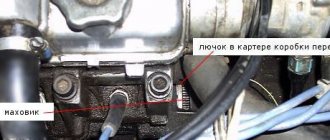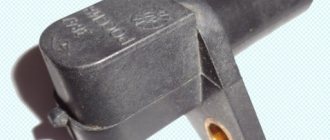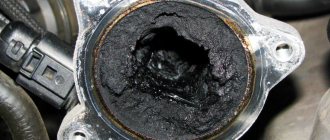The whole truth about the fuel consumption of the VAZ 2121 Niva and its modifications
There are a number of other reasons for the increase in gasoline consumption by these cars:
- high-quality gasoline - you need to refuel at reliable gas stations. By filling up with suspicious gasoline at an unknown gas station, you are putting fuel filters at risk;
- the fuel system must be kept clean, the jets must be cleaned constantly;
- severe wear of piston rings, pistons and cylinder block can increase fuel consumption;
- reducing compression in the engine gives the same result - high fuel consumption;
- Incorrect injector setting.
Dimensions, weight, carrying capacity How to reduce appetites
| Lada 212140 fuel consumption per 100 km If you analyze the characteristics of the Niva-Chevrolet car, reviews from owners, a fuel consumption of 14 liters suits drivers, and many do not want a new car. Experiments by car enthusiasts have shown that a 6-blade Niva fan consumes about 0.7 liters per 100 km, which is 40 more than a 4-blade fan from a Zhiguli with an indicator of 0.5 liters per 100 km. |
| What is the fuel consumption of the Niva (VAZ 2121 and VAZ 2131) - RemontoMore In 21213 they changed the rear part, making the third door larger and changing the lights to original ones. Previously, the Niva used lights from the VAZ 2106. The Niva 2121 was the very first ever released, produced from 1977 to 1993 and was equipped with a carburetor injection engine that developed 80 hp. |
- adhere to a calm, non-aggressive driving style;
- change fuel and air filters on time;
- monitor the tire pressure (optimally 2.1 - 2.2 atmospheres);
- use high-quality motor oil and good gasoline;
- monitor the technical condition of the car, especially its brake system;
- do not carry extra cargo in the car that makes the car heavier;
- Warm up the engine in cold weather.
Carburetor engines 1.6-1.7 l • I bought it in 2004, I still drive it.
Replace the air filter
At a speed of 70-80 km/h on a flat road without acceleration, consumption was recorded at 8 liters per 100 km, which turned out to be 1 liter less than at speeds of 2000-2200. When choosing a new car, weight can become the main criterion, because it is the main reason for the loss of kinetic energy of the car, however, if your plans do not include buying a new one, then you need to make the old one extremely light.
What kind of gasoline to fill in VAZ 4×4 21214
Considering the compression ratio of the factory engine for 4x4 (21214), it is recommended to use gasoline with an octane rating of 95 AI-95 to obtain the calculated specific engine power.
What happens if you fill with high-actane gasoline (AI-98/100)?
The engine of this VAZ model does not require high-octane gasoline. Such fuel will burn more calmly and worse in it, often ignoring the spark of the candle. In this case, the combustible mixture, not having time to burn during the power stroke, continues to burn with the exhaust valves open. Such processes at high operating temperatures and prolonged exposure lead to burnout of valves and exhaust seats. Engine performance indicators deteriorate, gasoline consumption increases, and wear on the piston group increases more than usual.
What happens if you fill with AI-92 gasoline?
This fuel is not designed for the specified compression ratio for a 4x4 internal combustion engine (21214). As a result, the finished mixture spontaneously ignites from too high pressure even before it is ignited by a spark from the spark plug. There are constant series of detonations in the cylinders, and the engine will definitely make characteristic knocking noises. Such processes, when exposed for a long time, wear out the elements of the cylinder-piston group earlier than usual and expose them to the risk of sudden breakdown of pistons, valves and cylinders.
What happens if you mix 95 and 92 gasoline in a tank?
Intentionally or by mistake, pouring 95 and 92 gasoline together into a 4x4 tank will result in a mixture with an average octane number, but not for long. At first they will be mixed in the tank; in theory, there is no threat to the engine from such fuel. Further, bypassing diffusion due to different densities of substances, gasoline with a lower octane will end up at the bottom, and with a higher octane at the top. As a result, the substance in its entirety will not work; first the fuel pump will pump worse gasoline, and then better.
About consumption on the current mileage
| The age of a 4x4 car (21214) is on average 10 years. The mileage for the 2012 model is approximately 230,000 km. On such cars there may be a slight increase in gas mileage. Even taking into account the maintenance that has been completed according to the regulations, the consumption will differ from the factory indicators - this is normal, it is important not to allow a sharp increase. In order for an SUV not to lose engine power and maintain standard compression for as long as possible, it is necessary to change consumables and oils on time and refuel with the correct fuel. During maintenance, do not refuse recommendations for replacing used parts. | |
| We calculated real fuel consumption in 2021 for such cars, taking into account mileage under normal operating and maintenance conditions. Fuel consumption now ranges from 11 to 17.8 liters per 100 km, for 4x4 21214 modifications produced in 2009 to 2014 with a minimum power gasoline engine. | |
Other generations of VAZ 4×4
How to reduce gasoline consumption
To start saving fuel, you need to understand the reasons for its increased consumption. The table contains practical tips and recommendations obtained from open sources.
Causes
So, having measured fuel consumption, we were convinced that it was increased. Let's try to find out the reasons. Now we will not discuss the increase in consumption due to driving style, weather conditions, and so on, we will focus only on technical issues.
1) The mass air flow sensor (MAF) is one of the leading culprits of high fuel consumption. It is usually installed immediately after the filter in the inlet pipe. It measures the mass of air passing through the pipe per unit of time, sooner or later it begins to overestimate the value and in response to this the ECU (electronic engine control unit) adds fuel, essentially resulting in a constantly enriched mixture. Overconsumption can reach up to 5 liters from above. The mass air flow sensor (BOSCH hot-wire type) is easily checked:
- look for the sensor output on the connector;
- We measure the voltage with the ignition on - it should be exactly 1V (0.996V).
if the voltage is more than 1V when the ignition is on and more than 1.55V at idle, the sensor must be replaced.
2) The second biggest culprit is “air leaks” after the DMV.
The amount of air increases, the mixture becomes leaner and the ECU, based on the readings of the oxygen sensor, increases the injection time, thereby greatly increasing consumption.
The leak may be due to torn pipes (for example, brake vacuum pipe, leaking intake manifold gaskets or injectors), or a defect in the EGR system. You can find and fix the problem using diagnostic programs.
3) Another sensor can have a strong impact on fuel consumption, this is the oxygen sensor (Lambda Probe).
Its task is to monitor the presence of residual oxygen in the burnt gases, that is, if oxygen means a lot, the mixture was lean and the ECU must be commanded to increase the mixture. If there is little oxygen, the mixture is rich and the command will be appropriate, all this measurement and change in the mixture occurs in a period of 300-450 ms, so it is difficult to check the lambda probe with a multimeter.
“The oscillogram of the lambda probe can only be understood by a diagnostician.”
4) Other reasons include the following:
- low (as a result of failure of the fuel pump, pressure regulator or due to a leak) fuel pressure. Checked with a pressure gauge in a special fitting;
- Incorrect readings of the temperature sensor (not to be confused with the temperature indicator sensor) are checked using the resistance from the manuals or the diagnostic program.
5) Reasons not related to the engine or fuel system:
- increased friction (wear or overtightening of wheel hubs);
- incorrect setting of wheel alignment angles;
- replacing standard tires with larger or smaller sizes;
- mismatch of gear ratios for a given vehicle.
Advice
Do not use various additives in fuel or oil that supposedly reduce fuel consumption, except for engine life, they do not reduce anything.
Indicators on liquefied gas - Key points
By modern standards, this figure may seem high, but the car is capable of driving at such a fuel consumption even over rough terrain, off-road, where most other cars use twice as much fuel as normal. As follows from the data provided by the manufacturer, for the Niva-Chevrolet SUV, fuel consumption per 100 km on the highway is about 9 liters, in the city about 14, in the combined cycle about 11 liters.
| The age of a 4x4 car (21214) is on average 10 years. The mileage for the 2012 model is approximately 230,000 km. On such cars there may be a slight increase in gas mileage. Even taking into account the maintenance that has been completed according to the regulations, the consumption will differ from the factory indicators - this is normal, it is important not to allow a sharp increase. In order for an SUV not to lose engine power and maintain standard compression for as long as possible, it is necessary to change consumables and oils on time and refuel with the correct fuel. During maintenance, do not refuse recommendations for replacing used parts. | |
| We calculated real fuel consumption in 2021 for such cars, taking into account mileage under normal operating and maintenance conditions. Fuel consumption now ranges from 11 to 17.8 liters per 100 km, for 4x4 21214 modifications produced in 2009 to 2014 with a minimum power gasoline engine. | |
"Niva-Chevrolet": reviews from real owners... Highlights
| What kind of gasoline to fill in VAZ 4x4 21214 Driving style is an important factor influencing the use of gasoline by the engine; the more extreme, harsh driving style, the more fuel will be consumed. Therefore, it is not always correct to recommend that you permanently disable all-wheel drive or switch to manual transmission; after all, it was for ease of driving and reliability of overcoming obstacles that the car was purchased. |
Niva 2131: technical characteristics of a 5-door car • The VAZ-2123 engine, which is the basis of Chevrolet Niva cars, was designed back in the 90s.
Basic methods
DO NOT drive in 5th gear at a speed of less than 90-95 km per hour, the gearbox goes to hell! You can’t throw up 60 km per hour in 4th gear - it’s a very big load on the internal combustion engine, you can’t drive less than 40 in third gear.
Design features of the car that affect gasoline consumption
- Motor. Car enthusiasts who have purchased a Chevrolet Niva consider its engine to be an obsolete model by today's standards. Even after modification, it will not provide a noticeable percentage of fuel savings. General Motors tried to modify this example by lightening the pistons and connecting rods with a revision of the design of the BC, but this practically did not give the expected effect.
- Weight. The weight of the car also significantly affects gas mileage.
A Russian compact SUV produced by the American company General Motors is the Chevrolet Niva, which made its debut in 2002 and exists to this day, having received only one major restyling during all this time.
The developers wanted to launch production of the second generation in 2016, but due to the economic situation in the country, the project was temporarily frozen.
Consumption for 1.7 l engine. Euro 5 standard – How to reduce appetites
| How to reduce fuel consumption in the field - Car expert, try to use various electrical equipment inside the car less often, for example, air conditioning, heated seats, lighting, music on, etc. This option is considered the most successful development of AvtoVAZ designers, which combines the functions of an all-terrain vehicle. as well as a passenger car. |
- 9.8 l/100 km on a free highway;
- 13.7 l/100 km when driving on busy city streets;
- 12 l/100 km in mixed mode.
Standard consumption per 100 km: passport data and real indicator • four cylinders, each of which has two valves;
Injection
The use of an injection system allows you to continuously adjust the mixture composition, reducing exhaust emissions and fuel consumption. During suburban operation of cars, fuel consumption is up to 8.5 liters; in dense traffic inside a populated area, engines burn up to 14 liters, corresponding to their carburetor counterparts.
When driving through wetlands or loose soil, cars require from 12 to 20 liters of fuel (efficiency in off-road conditions is not regulated by the factory).
Injection engine type.
VAZ-2131 Niva
Reasons for increased fuel consumption. why fuel consumption is increased Initially, the VAZ-2131 was equipped with a VAZ-21213 carburetor engine with a volume of 1.7 liters and a power of 82 hp. There was also a version with a VAZ-2130 engine with a volume of 1790 cm3. Its power was also 82 hp, but the torque was higher - 135 Nm versus 125 Nm.
Since 2001, instead of carburetor engines, a more modern VA-21214 injection engine of the same volume, but increased to 83 hp, has been installed. power and torque of 129 Nm. A 5-speed manual transmission was installed for all engines.
Carburetor classic
Carburetor power systems for internal combustion engines became most widespread in the last century. The carburetor itself, as a unit, must prepare the fuel mixture of the required composition, mixing air and fuel in certain proportions. The working mixture dosed by the carburetor is sucked into the combustion chamber due to the difference in pressure in the atmosphere and in the intake manifold. The operating algorithm is very simple.
Carburetor engines were used in all branches of mechanical engineering, including aviation, and demonstrated high levels of reliability, efficiency and durability. Starting from the 1970s, the relevance of carburetor systems began to gradually fade away, until at the beginning of the 21st century, almost all automakers stopped producing cars with similar engines.
Driving style
Wide wheels, additional equipment in the form of an operating winch, the use of air conditioning, the dark color of the car, and frequent braking on forest roads can increase the amount of fuel consumed by 10-15 percent compared to that declared by the manufacturer. The injector on 21214 has the following operating scheme: from the vehicle components, a number of sensors receive data on air flow, crankshaft movement, coolant temperature, engine detonation, fuel consumption, voltage in the on-board network, etc.
Is there an alternative?
To save fuel, some suggest converting to gas. There is a lot of debate on this issue, however, if you agree to such a rework, you should take into account the opinions of critics:
- It is not possible to repair the engine at every service center - for service you will have to visit a specialized workshop;
- gas consumption is higher - compared to gasoline, 1.5 times more fuel is required;
- burnout of the cylinder head gasket - the standard resource of 150 thousand km can be safely divided in half;
- gas takes away power - and Niva already doesn’t have enough of it;
- cross-country ability is reduced - if a gas cylinder is installed behind the rear gearbox, it noticeably reduces ground clearance.
Practice shows that HBO is not the best option for Niva. To increase cross-country ability, some try to place the cylinder in the trunk, but the container will take up its entire volume.
Adding to the complexity is increased engine wear and reduced vehicle performance.
Still, the best option for a Chevrolet Niva is high-quality gasoline and proper care.
How to reduce fuel consumption of Niva? • Basic methods
If the Niva's fuel consumption is very high but the carburetor or injector settings are done correctly, pay attention to the wear of the Niva's piston group. Thus, it is possible to adjust the ventilation system without extra costs so that operating temperatures in the engine do not exceed the required 98-102 degrees Celsius.
| Modification | VAZ-2121 (1.6 75 hp carburetor) | VAZ-21213 (1.7 carburetor 76 hp) | VAZ-21214 (1.7 80 hp injector) | VAZ-2131 (1.8 82 hp carburetor) | VAZ-2131 (1.7 80 hp injector) |
| Gasoline consumption liters per 100 km (l/100 km) | |||||
| Urban cycle | 13,4 | 11,5 | 11,2 | 12,3 | 12,2 |
| Country cycle | 10,8 | 8,3 | 8,2 | 9,4 | 9,2 |
| Mixed cycle | 13,1 | 11.2 | 10,2 | 12,1 | 11,9 |
Warnings Basic Methods
| VAZ 2131 Niva real reviews about fuel consumption, injector and carburetor Usually, manufacturers recommend changing the spark plugs to new ones before each winter, because poor-quality sparking in the cylinder can lead to poor fuel combustion, which means increased loads and overflow; There was a mug 100 v8city 18-22 highway 13 _18 less only if two Niva Chevik city are sick from progression to 17 highway 11-14 depending on the speed. |
- reducing the friction force in the engine will reduce fuel consumption;
- this is not difficult to do: you just need to regularly lubricate the parts with engine oil;
- the oil must be of high quality, otherwise there will be no effect;
- It is better to use high viscosity motor oil;
- increasing the pressure in Niva tires will reduce gasoline costs;
- the same laws of physics apply here: pumped by no more than 0.3 atm. tires will help reduce speed and friction with the road.
Gasoline consumption factors on the highway
On the highway, the main consumption factors will be:
- Aerodynamic air resistance. To increase cross-country ability, the ground clearance was raised, but at the same time the silhouette of the car became higher. This means that when moving, it has to “push” more air, wasting gasoline on it.
- Transmission losses. All-wheel drive involves increasing the transmission elements. The rotation of each requires energy, although the efficiency of a single bearing can exceed 0.99, there are many of them, and the total losses become noticeable.
In Soviet times, advanced breeders chased SKF bearings as higher quality and more durable, trying to switch to imported ones whenever possible.
At the same time, fuel consumption also decreased slightly, although few people were interested in this at the time. A separate song handout. Moreover, the song is in the literal sense of the word: its howling has infuriated more than one generation of drivers, and even now sometimes music is selected for the Niva with the expectation “to drown out the transfer case.” At that time, this state of affairs was due to a shortage of specific precision metal-cutting machines, forcing designers to increase tolerances, designing something that could be mass-produced using existing technological equipment. The periodic whining of modern transfer cases is more difficult to explain, fortunately complex additives have appeared in transmission oil, which significantly reduce the severity of the problem of gear break-in. But this is not just noise, but a symptom of increased friction losses and minus efficiency. 3. Another factor is tires. It is almost impossible to combine good grip properties on snow and mud and low rolling friction losses, including internal ones (hysteresis). What you have to sacrifice in the case of an SUV is clear.











